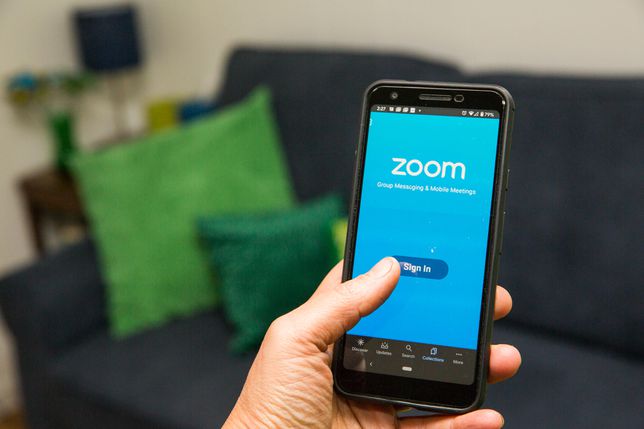
Lunchtime and weeknight calls have increased on Zoom too since the end of February.
Sarah Tew/CNET
Zoom might have once been the go-to for business meetings, but now, it’s all about socializing.
The company has revealed it’s seen a 1,900% increase in weekend calls, as people around the world are forced to stay inside their homes and connect with friends and family remotely.
The figures compare the week of April 12 with the week of Feb. 23, before the World Health Organization declared the coronavirus outbreak a pandemic and before most of the world went into lockdown. They also show a 500% increase in lunchtime meetings and a 700% increase in calls between 5 and 9 p.m on weekdays.
Speaking to CNET on Thursday via Zoom, the company’s chief product officer, Oded Gal, said the shift has been rapid.
“This is really something that has happened in the past three weeks or several weeks. The product use cases have changed,” he said.
“The biggest change is that people use it across the board for business usage, but also for personal use for events, for family… for weddings and even birthdays. And, to some extent, situations that are not as happy, like funerals,” Gal said.
“Our meetings on weekends have increased 2,000%. So that’s a big change from our standpoint.”
The shift away from business meetings comes as Zoom’s user base continues to grow at an exponential rate. On Wednesday, Zoom CEO Eric Yuan confirmed in a blog post the company had passed 300 million daily participants in April.
But with that growth, the company has also faced a litany of security issues, from user accounts being sold on the dark web, to a spate of zoombombing and coordinated zoomraids and pushback over encryption standards.
Read more: Every security issue discovered in Zoom
The company responded to the issues in a blog post on April 1, announcing it’d freeze new features on its platform and focus all its energy on tackling privacy and security problems for the next 90 days. In the time since, Zoom has rolled out new security features such as enabling waiting rooms and passwords for calls, as well as a new security update to strengthen encryption and help stop zoombombing.
Despite knowing the world was going into lockdown, Gal says the company still wasn’t prepared for how many users would jump on the platform. But, he says, Zoom has ultimately tried to own its mistakes and grow from them.
“It happened very fast and we didn’t anticipate it,” he said. “We initially reacted to it, but I feel that now we’re more proactive about it and making sure that we address the situation and work closely on all those use cases to really make sure they run smoothly.
“We do own the problems and Eric [Yuan, Zoom’s CEO] has actually discussed that he’s taking complete obligation,” said Gal. “I believe for us it’s less about altering things quick and breaking things and returning and repairing. It’s more about, ‘How do we handle customers and end users?’ instead of simply organizations.”
Now What is a video interview and panel series with market leaders, stars and influencers covering the significant modifications and patterns affecting service and how customers link in the “brand-new regular” 2020 world and beyond. There will constantly be modification in our world, and there will constantly be innovation assisting us browse that modification. We’ll talk about the twists, turns and prospective options along the method.
Correction, May 5: On April 30, Zoom upgraded CEO Eric Yuan’s initial article to clarify that it has 300 million day-to-day conference individuals, not day-to-day users. This modified metric counts individuals for every single conference they go to in a day.





